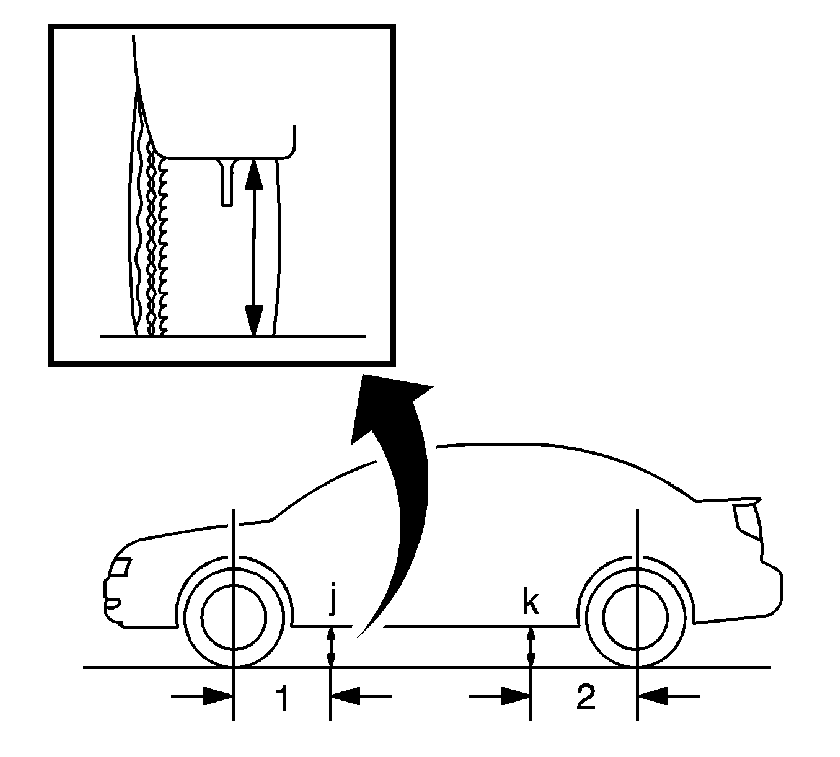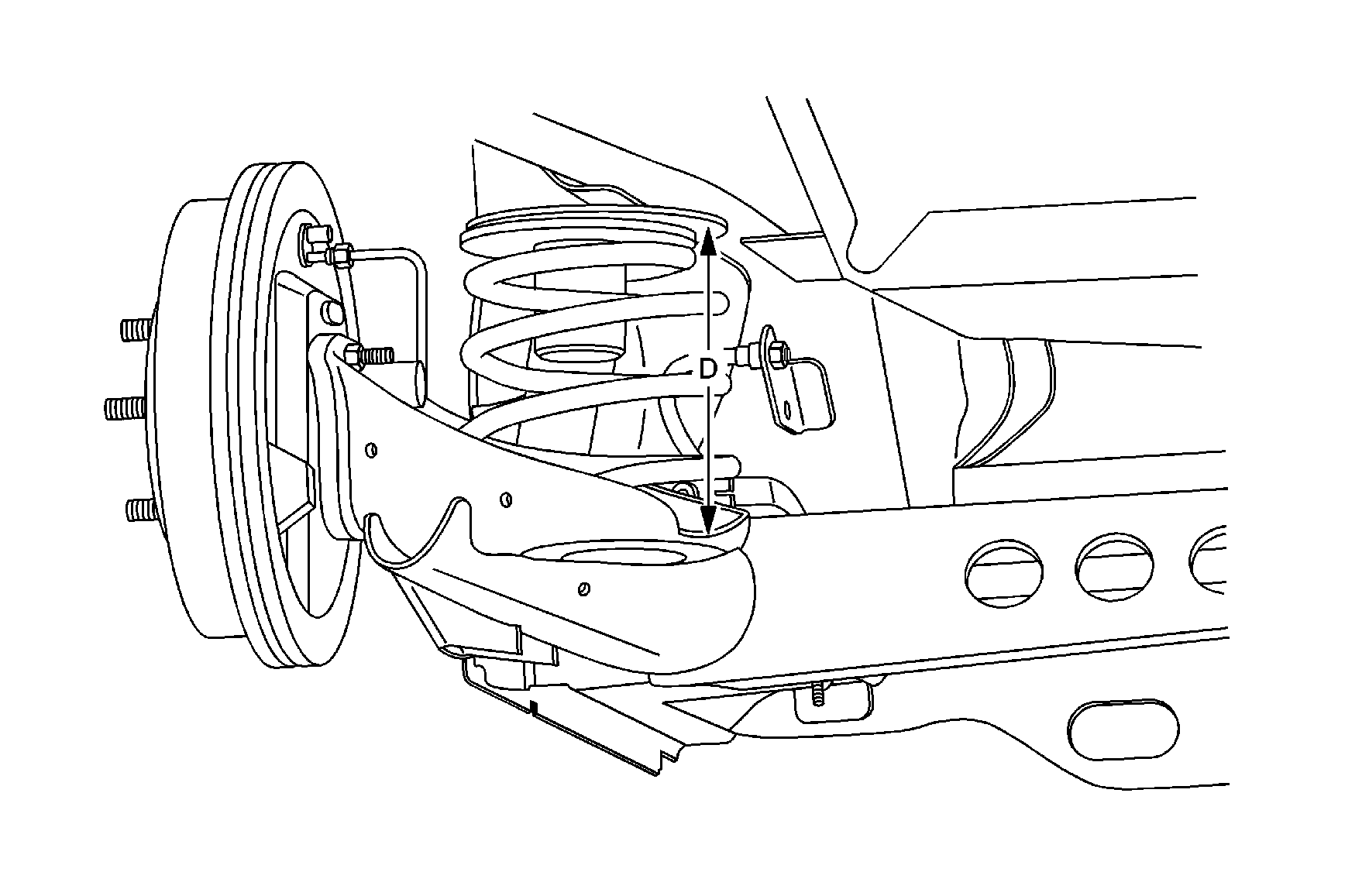Trim Height Measurement
Trim height is a predetermined measurement relating to vehicle ride height. Incorrect trim heights can cause the vehicle to bottom out over bumps, damage to the suspension components and symptoms similar to wheel alignment problems. Check the trim heights
when diagnosing suspension concerns and before checking the wheel alignment.
Perform the following before measuring the trim heights:
| • | Check the fuel level. Add additional weight if necessary to simulate a full tank. |
| • | Make sure the passenger and rear compartments are empty, except tor the spare tire. |
| • | Make sure the vehicle is on a flat and level surface, such as an alignment rack. |
| • | Check that all the vehicle doors are securely closed. |
| • | Check that the vehicle hood and rear deck lids are securely closed. |
| • | Check for installed after market accessories or modifications that could affect trim height measurement. |
Important: All dimensions are measured vertical to the ground. Trim height should be within ±10 mm (±0.39 in) to be considered correct.
Measuring the J and K Dimension

Use the following procedure to check the J and K dimensions:
- Measuring the J dimension for the left and right side of the vehicle inboard of the pinch-weld flange at 544 mm (21.4 in) from the centerline of the front wheel.
- Compare the measurement to the J specification. Refer to
Trim Height Specifications
.
- If the measurement is outside of the specified range, replace the front springs. Refer to
Strut, Strut Component, and Spring Replacement
.
- Using your hands, lift the rear bumper approximately 38 mm (1.59 in).
- Gently remove your hands and allow the vehicle to lower.
- Using your hands, jounce the rear of the vehicle downward approximately 38 mm (1.59 in).
- Gently remove your hands and allow the vehicle to rise.
- Measuring the K dimension for the left and right side of the vehicle inboard of the pinch-weld flange at 560 mm (22 in) from the centerline of the rear wheel.
- Compare the measurement to the K specification. Refer to
Trim Height Specifications
.
- If the measurement is outside of the specified range, replace the rear springs. Refer to
Coil Spring Replacement
.
Measuring the Z Dimension

The Z height dimension measurement determines the proper ride height for the front end of the vehicle. There is no adjustment procedure. Repair may require replacement of suspension components.
Use the following procedure to check the Z height dimension:
- Using your hands, lift the front bumper approximately 38 mm (1.59 in).
- Gently remove your hands and allow the vehicle to settle .
- Repeat this operation a total of 3 times.
- Measure from the bottom surface of the cradle, in line with the ball joint, to the bottom of the ball joint in order to obtain the Z height measurement.
- Using your hands, jounce the front of the vehicle downward approximately 38 mm (1.59 in).
- Gently remove your hands and allow the vehicle to settle .
- Repeat the jouncing operation 2 more times.
- Measure the Z height dimension.
- The true Z height dimension number is the average of the high and the low measurements. Refer to
Trim Height Specifications
.
D Height Measurement

The D height dimension measurement determines the proper rear end ride height. There is no adjustment procedure. Repair may require replacement of suspension components.
Use the following procedure to check the D dimension:
- With the vehicle on a flat level surface, lift upward on the rear bumper 38 mm (1.59 in).
- Gently remove your hands and allow the vehicle to settle.
- Repeat the jouncing operation 2 more times.
- Measure the D height for the left and right side of the vehicle. Measure the vertical distance between the bottom edge of the upper spring seat to the bottom of the notch in the lower spring seat.
- Using your hands, jounce the front of the vehicle downward approximately 38 mm (1.59 in).
- Gently remove your hands and allow the vehicle to settle .
- Repeat the jouncing operation 2 more times.
- Measure the D height dimension.
- The true D height dimension number is the average of the high and the low measurements. Refer to
Trim Height Specifications
.
- If these measurements are out of specifications, inspect for the following conditions:
| • | Worn or damaged suspension components |



